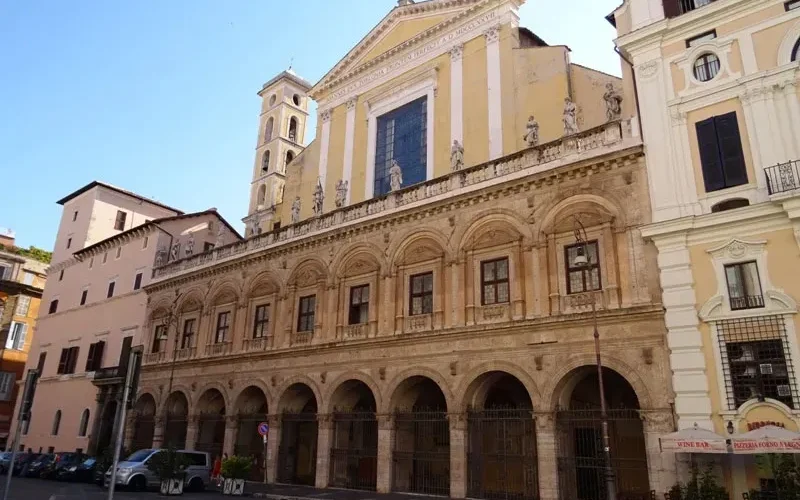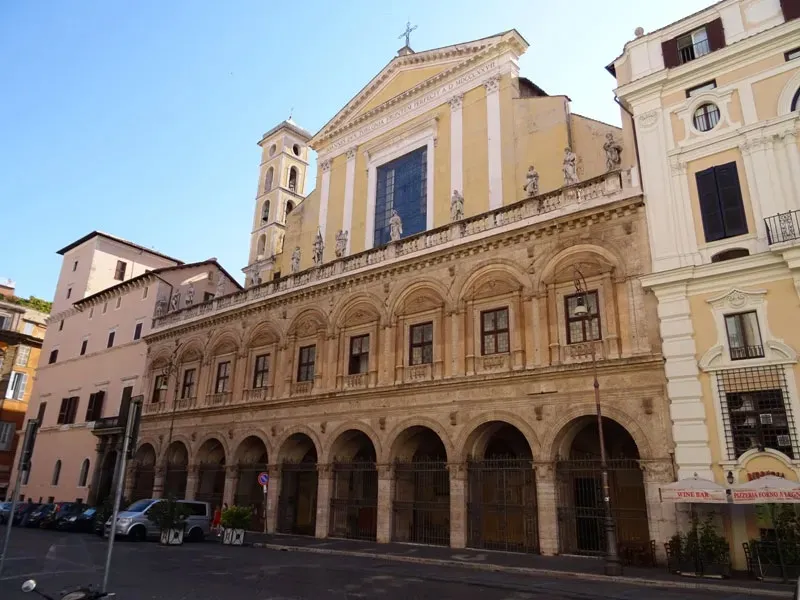
Introduction
Santi Dodici Apostoli (Church of the Twelve Holy Apostles; Latin: SS. Duodecim Apostolorum), commonly known simply as Santi Apostoli, is a 6th-century Catholic parish and titular church and minor basilica in Rome, Italy, dedicated originally to St. James and St. Philip, whose remains are kept here, and later to all Apostles. Today, the basilica is under the care of the Conventual Franciscans, whose headquarters in Rome is in the adjacent building. It is the Station church for Friday, the first week of Lent.
The Cardinal Priest of the Titulus XII Apostolorum is Angelo Scola. Among the previous Cardinal Priests are Pope Clement XIV, whose tomb by Canova is in the basilica, and Henry Benedict Stuart.
The first church dedicated to the Holy Apostles was one built under Pope Julius I in the mid-fourth century near Trajan’s Forum. It is listed as “Titulus SS Apostolorum” in the acts of the synod of 499. Its successor was built by Pope Pelagius I, on the present site, to celebrate the victory of Narses over the Ostrogoths at the Battle of Taginae in 552. General Narses contributed to the construction of the building. It was dedicated around 570 by Pope John III to St. James and Saint Philip the Apostle. Santi Apostoli was ruined by the earthquake of 1348, and left abandoned.
In 1417, Pope Martin V, whose Colonna family owned the adjacent Palazzo Colonna, restored the church. The Franciscans took charge of the church in 1463. A more extensive restoration was undertaken by Pope Sixtus IV and his nephew, Giuliano della Rovere, from 1471 to 1484. The inscriptions found in SS. XII Apostoli, a valuable source illustrating the history of the church, have been collected and published by Vincenzo Forcella.
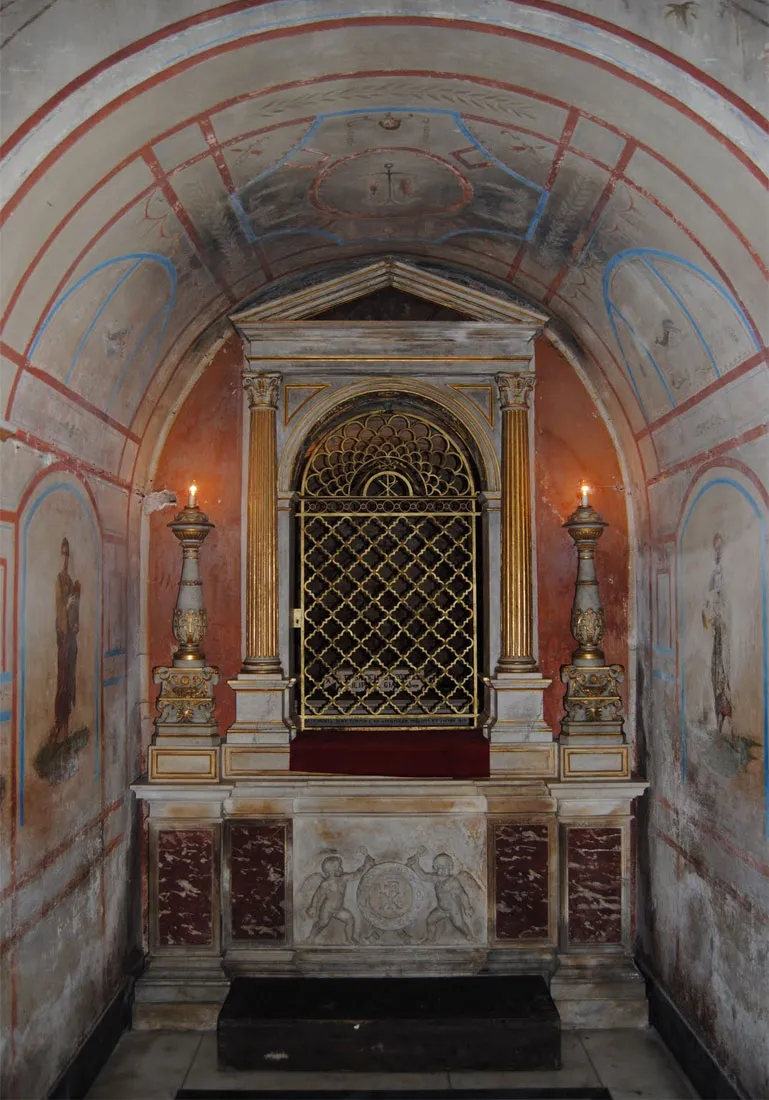
Philip and James were both apostles, and both served Christ faithfully during the very early days of the Church. Philip seems to have been an enthusiastic person. He was the one who brought his friend Nathanael to Jesus, insisting to Nathanael that he had found the person about whom Moses had written. Some years later it was Philip who made arrangements, with the help of Andrew, to have a group of Greek Gentiles brought to Jesus. Philip the apostle is not to be confused with the deacon Philip of Acts 8, who preached in Samaria and baptized the Ethiopian, although some writers say that they are the same person. Philip also had a practical, down-to-earth mind. He was the apostle who commented that it would take a considerable amount of money to feed a crowd of more than 5,000 hungry men, women, and children. It was Philip who asked to see the Father when Jesus spoke about him at the Last Supper.
James was the son of Alphaeus and seems to have been born in Caesarea. He is mentioned less frequently in the New Testament than Philip is. Sometimes James is called the Less, which might be a hint that he was a short person or else that he was younger than the other apostle named James.
After Jesus’ death James continued to preach the Gospel and is believed to have become the first bishop of Jerusalem. Assuming that James and the first bishop of Jerusalem are one and the same person, then he met his death as a martyr in that city about the year a.d. 62. Tradition identifies James as the author of the epistle associated with his name.
Miracles of Saint James
Saint James’ powers are evident on both land and sea. He is skilled with ships and helps those who cry to him in need, no matter where they may be. His appearance during the battle of Clavijo in the late ninth century is one of his first miracles in his militant aspect. The relic of his hand, while housed in Reading Abbey, England, wrought cures during the twelfth century, which are attested to in a collection of twenty-eight miracles. In 1539 in Tetlán (Jalisco, Mexico), the saint aided Spanish troops.
Miracles of Saint Philip
After the Ascension of the Lord, the Apostle Philip preached the Word of God in Galilee, accompanying his preaching with miracles. Thus, he restored to life a dead infant in the arms of its mother. From Galilee he went to Greece, and preached among the Jews that had settled there. Some of them reported the preaching of the Apostle to Jerusalem. In response, some scribes arrived in Greece from Jerusalem, with one of the Jewish chief priests at their head, to interrogate the Apostle Philip.
The Apostle Philip exposed the lie of the chief priest, who said that the disciples of Christ had stolen away and hidden the body of Christ. Philip told instead how the Pharisees had bribed the soldiers on watch, to deliberately spread this rumor. When the Jewish chief priest and his companions began to insult the Lord and lunged at the Apostle Philip, they suddenly were struck blind. By his prayer the Apostle restored everyone’s sight. Seeing this miracle, many believed in Christ. The Apostle Philip provided a bishop for them, by the name of Narcissus.
Architecture of Saint James The Less & Saint Philip Basilica dei Santi XII Apostoli Rome
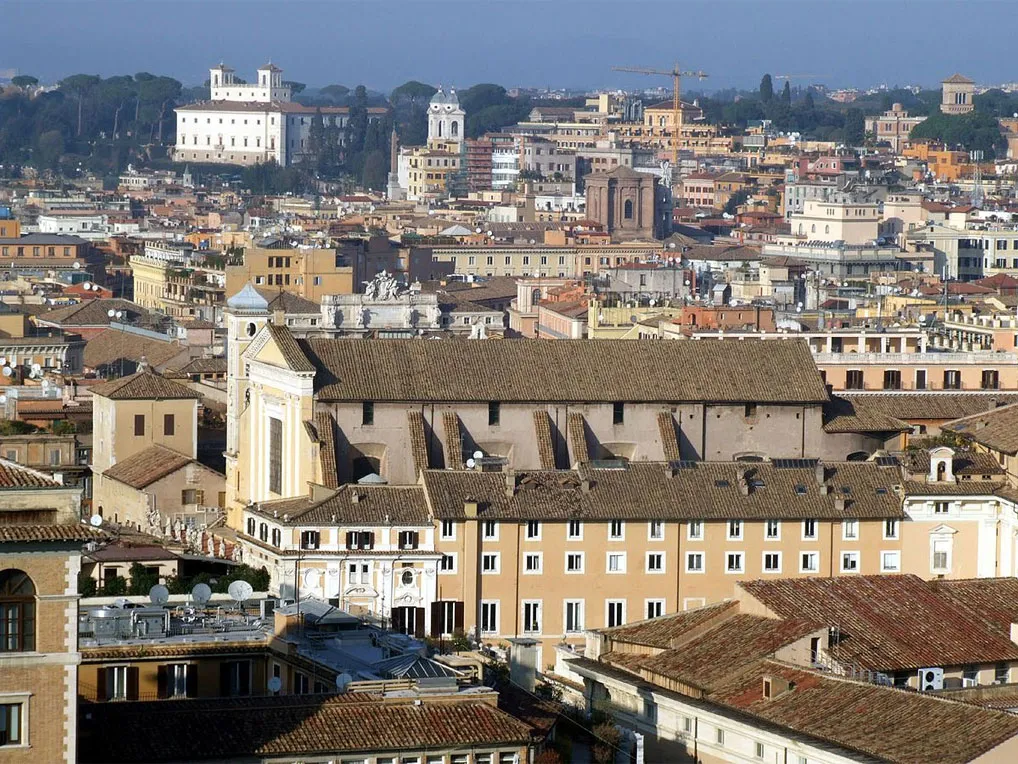
The 15th century portico that precedes the present facade is by Baccio Pontelli. In 1665, Carlo Rainaldi walled up the arches in the upper level and installed statues on the parapet. The church was later restored again, with the facade completed by Giuseppe Valadier in 1827.
On the wall of the portico on the right side, is an antique bas-relief of an eagle surrounded by an oak crown that it holds in its talons. Opposite is the monument of the Venetian engraver Giovanni Volpato sculpted and erected by his friend and countryman Antonio Canova. It consists of a large bas-relief, representing “Friendship in Mourning” in the form of a woman weeping before the bust of the deceased Volpato.
Interior
Around 1700, Pope Clement XI instigated dramatic renovations of the church. A new Baroque interior was designed by Carlo Fontana and completed in 1714. The fresco on the vaulted ceiling is the Triumph of Franciscan Order by Baciccio. Above the sanctuary is a fresco from 1709 by Giovanni Odazzi, representing the “Fall of Lucifer and his Angels”. There are also later frescoes of the Evangelists by Luigi Fontana in the apse. The main altar had a baldacchino with four porphyry columns. The altarpiece is by Domenico Maria Muratori and depicts the Martyrdoms of the Apostles Philip and James the Less.
To the right of the high altar are the tombs of Count Giraud de Caprières (died 1505) and Cardinal Raffaele Riario (died 1521), tentatively attributed to Michelangelo. To the left is a monument to Cardinal Pietro Riario, nephew of Pope Sixtus IV, by the school of Andrea Bregno and possible designed by Andrea Bregno himself. There is also a Madonna by Mino da Fiesole.
Next to a pier of the nave on the right-hand side, near the first chapel, is enshrined the heart of Maria Klementyna Sobieska, wife of the Old Pretender, James Francis Edward Stuart. Her tomb is in St Peter’s Basilica. Her monument is by Filippo della Valle. Her husband used to pray here every morning; it was his parish church when he lived at the nearby Palazzo Muti. The confessio was constructed in 1871. During its construction, the relics of St James and St Philip, which were taken from the catacombs in the 9th century to protect them from invaders, were rediscovered under the high altar. The wall paintings are reproductions of ancient catacomb paintings. An inscription explains that Pope Stephen IV walked barefoot in 886 from the catacombs to the church carrying the relics on his shoulders.
About 1472, Melozzo da Forlì was commissioned by Cardinal Pietro Riario to paint the vault of the apse, his subject being the Ascension of Christ. It is one of the earliest known examples of perspective applied to the human figure on roof or ceiling decoration. According to Giorgio Vasari, “the figure of Christ is so admirably foreshortened as to appear to pierce the vault; and in the same manner the angels are seen sweeping through the field of air in two opposite directions.” This fresco was taken down in 1711 when Clement IX enlarged the choir. The figure of Christ is now in the Quirinal Palace. Some of the other portions, which influenced Raphael, are in the sacristy of St Peter’s. A hall in the Vatican Museums, holds designs of angels and apostles by Melozzo, taken from the same fresco.
This much-altered 6th-century church is dedicated to the apostles James and Philip, whose relics are in the crypt. Its most obvious attraction is the portico, which has Renaissance arches, and the two-tier facade topped by 13 towering figures. Inside, the flashy baroque interior was completed in 1714 by Carlo and Francesco Fontana. Highlights include the ceiling frescoes by Baciccia and Antonio Canova’s grandiose tomb of Pope Clement XIV. Surrounding the basilica are two imposing baroque palazzi: at the end of the square, Palazzo Balestra, which was given to James Stuart, the Old Pretender, in 1719 by Pope Clement XI, and opposite, Palazzo Odelscalchi, with its impressive Bernini facade.
The church has the tombs of the Apostles Philip and James the Lesser. They are in the crypt below the main altar. walk all the way to the front of the church and then down the stairs.
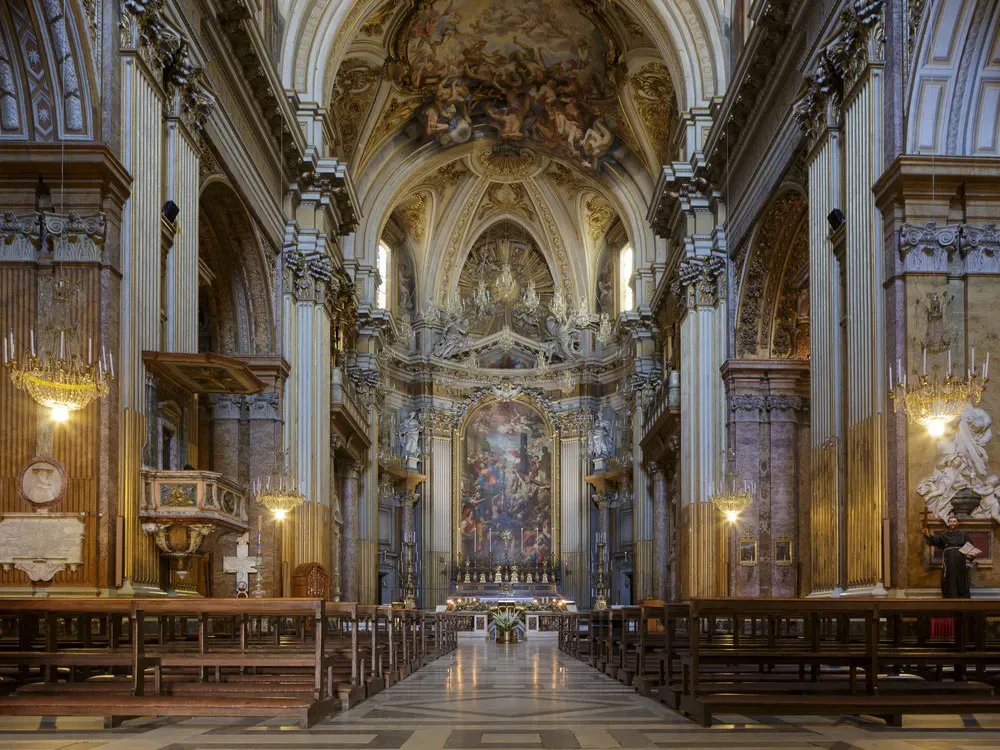
The Twelve Holy Apostles
Dedicated to the twelve Apostles, it is the only basilica in Rome that was not built on pre-existing Roman structures. Probably founded in the 6th century by Pope Pelagius, the church was severely damaged by an earthquake and was restored to use in the 15th century by Pope Martin V whose family, the Colonnas, owned the surrounding area. Dating back to the same century are the portico that precedes the façade and the enormous fresco in the main apse by Melozzo da Forlì, showing the Ascension of Christ. The fresco was removed in 1711 and divided into bits, now to be seen at the Vatican Museums and the Quirinal Palace.
At the beginning of the 18th century the church was rebuilt from its foundations by Pope Clement XI who entrusted the work to a group of architects including Carlo Fontana and his son Francesco. The neoclassical facade is by Giuseppe Valadier (1827), hidden by the 15th-century two-storey entrance portico with nine arches, built by Baccio Pontelli. Pontelli’s design for the portico was changed when Carlo Rainaldi walled up the arches on the upper level and added the balustrade with statues of Christ and the Apostles around the year 1665.
The solemn and severe interior includes works by Antoniazzo Romano and tomb reliefs from the 15th century, one of which by Mino da Fiesole. The best known works are the fresco on the vault by Baciccio, depicting the Triumph of the Order of St Francis; the funerary monument of Pope Clement XIV by Antonio Canova (1787) and the large fresco by Giovanni Odazzi with Rebel Angels Defeated by St Michael, characterized by an extraordinary illusionistic effect. Also executed by Canova is the neo-Classical memorial of 1807 to the engraver Giovanni Volpato, you can admire in the basilica Portico.
Since 2008, in an interspace between the church and a neighboring building it’s possible to admire the frescoes of the funerary chapel of Cardinal Bessarion. It was completed and frescoed in 1483 by Antoniazzo Romano and Melozzo da Forlì, but was apparently derelict and its frescoes whitewashed when the Odescalchi Chapel was built within it in the 18th century. Discovered in 1959 during restoration work, the chapel is one of the most important places for the history of 15th century painting in Rome.
Chapels
The first chapel on the left is dedicated to Our Lady of Sorrows.
The second chapel was dedicated to St. Joseph of Cupertino. The altarpiece from 1777 is by Giuseppe Cades. The two columns of verde antico, green marble, are reputed to be the largest known in that type of stone. The third chapel of the left is dedicated to St. Francis of Assisi, containing The Ecstasy of St Francis by Giuseppe Chiari. Pope Clement XIV (1769–1774) is buried at the end of the left side aisle, near the door of the sacristy. His Neo-Classical tomb is by Antonio Canova, made in 1783-1787. Besides the statue of that Pope, there are two uncommonly fine figures of “Temperance” and “Clemency”. This was the first major work Canova did in Rome. The first chapel on the right-hand side of the nave is dedicated to St Bonaventure. The altarpiece is by Niccolò Lapiccola. It also contains Antoniazzo Romano’s Madonna, moved from the Bessarion chapel.
The second chapel on the right is dedicated to the Immaculate Conception; the altarpiece is by Corrado Giaquinto. The third chapel of the left is dedicated to St. Anthony of Padua; the altarpiece (1723) is by Benedetto Luti. It is the chapel of the Odescalchi, whose palazzo was nearby. Behind the Odescalchi chapel is the funerary chapel of Cardinal Bessarion. Antoniazzo Romano completed the decoration in 1467. It contained a 15th-century Madonna donated by Bessarion, now relocated to the Chapel of St. Bonaventure. The Chapel of the Crucifixion is to the right of the main altar. Designed as a small basilica, it has a nave and two aisles. The 8 columns are from the 6th-century church.
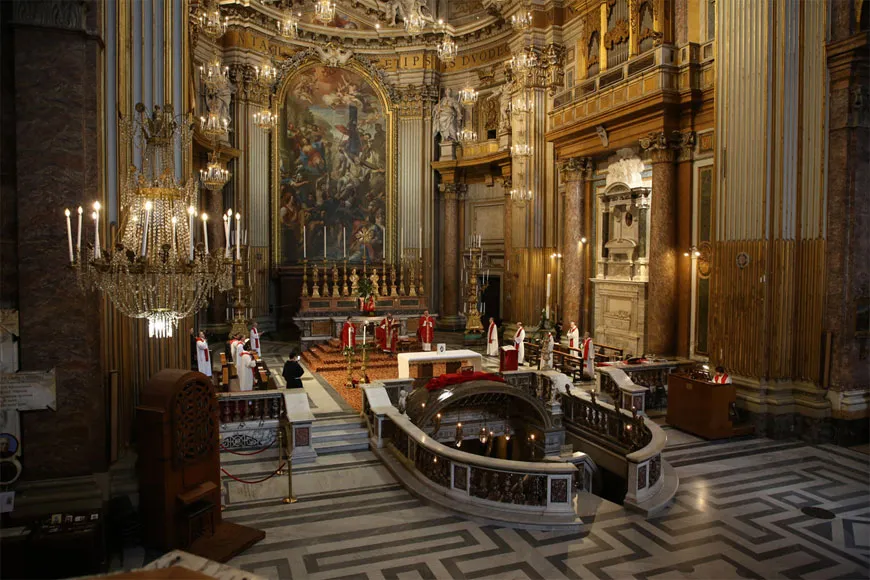
Annual Feast Day
Feast day: May 3rd
On May 3rd, the Church celebrates the Feast of Saints Philip and James to honor two early disciples of Jesus, who were among the original Twelve Apostles. The St. James of this feast day is James the Less, or Lesser.
Church Opening Time
Mass Timing
Sunday and Feast Day Mass Times
9:00 a.m.
10:30 a.m.
12:00 p.m.
6:30 p.m.
Daily Mass Times
7:30 a.m
8:15 a.m.
6:30 p.m.
Contact Info
Basilica dei Santi XII Apostoli,
Piazza Santi Apostoli,
51 – 00187 Rome (RM),
Italy.
Phone No.
Tel : +39 06699571
Accommodations
Connectivities
Airway
Saint James The Less & Saint Philip Basilica dei Santi XII Apostoli Rome, Italy to Leonardo da Vinci–Fiumicino Airport 34 min (27.4 km) via A91
Railway
Saint James The Less & Saint Philip Basilica dei Santi XII Apostoli Rome, Italy to Roma Aurelia, Roma 28 min (11.1 km) via Via Aurelia.

